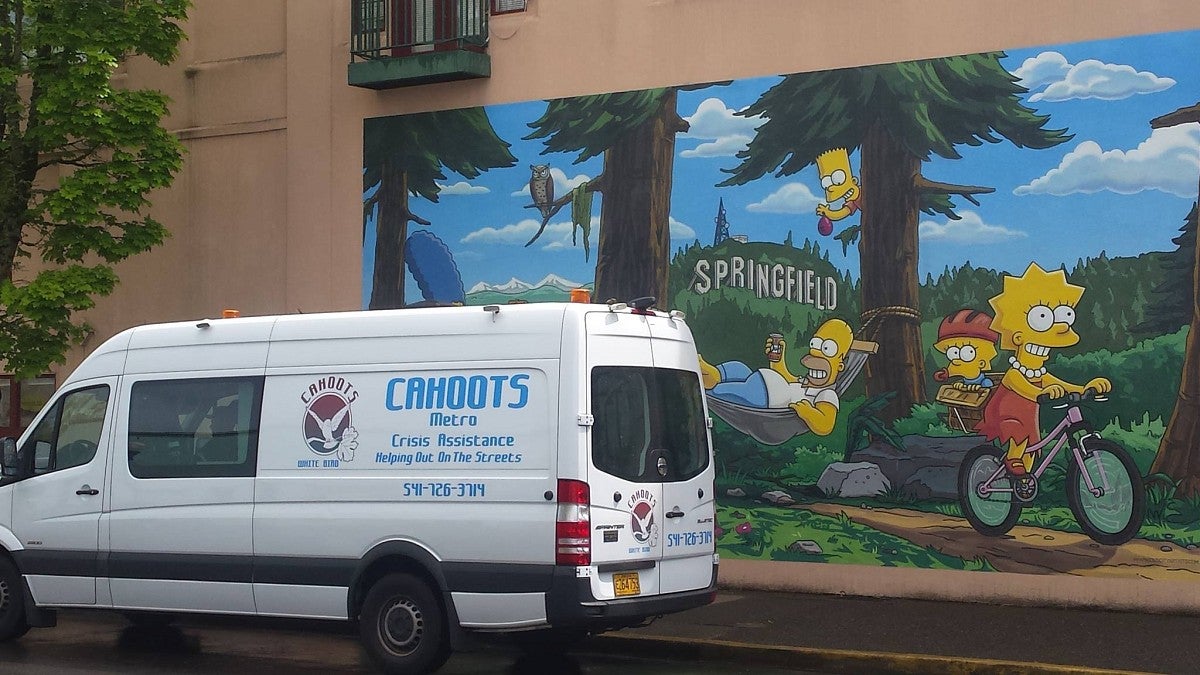
July 15, 2025 - 9:00am
A groundbreaking crisis de-escalation program that started in Eugene to help people with mental health or substance abuse issues saves cities money and reduces arrests, a University of Oregon-led study has found.
Known as CAHOOTS, for Crisis Assistance Helping Out On The Streets, the program sends mental health workers and medics to handle calls that involve mental health crises, drug overdoses and similar issues. During the height of the 2020 Black Lives Matter protests, CAHOOTS became a national model for how law enforcement and mental health workers could collaborate to defuse mental health crises.
Since then it has inspired cities across the U.S. to adopt similar programs, including Oakland, California; Denver, Colorado; and Albany, New York.
Each call CAHOOTS responds to saves the cities of Eugene and Springfield 35 cents, the study found. That may not sound like much but multiplied by several thousand calls a year, it adds up.
"We find that CAHOOTS is a cost-saving program, using what we think are pretty conservative assumptions," said Jonathan Davis, an associate professor of economics in the UO’s College of Arts and Sciences who led the study. "By replacing some police responses, they're actually saving the city money."

The team released its findings on CAHOOTS and its impact on Eugene and Springfield in May as part of a National Bureau of Economics Research working paper series. In addition to Davis, the research team consists of UO alumnus Jadon Schmitt, Samuel Norris of the University of British Columbia, Yotam Shem-Tov of the University of California, Los Angeles and Chelsea Strikland of Texas A&M University.
Operated by Eugene-based health nonprofit organization White Bird Clinic, CAHOOTS serves the Springfield community. Eugene cut the service from its budget in April.
CAHOOTS began in 1989 and until last April worked in partnership with the Eugene and Springfield police departments. Dispatch operators at the Lane County emergency communications center assign CAHOOTS to calls received through the 911 and nonemergency phone lines.
When CAHOOTS responds to a call, a team of two, usually one medic and one mental health crisis worker, goes to the scene. Before Eugene cut the service, CAHOOTS responded to about 8 percent of emergency 911 calls in the cities of Eugene and Springfield. In 60 percent of those calls, CAHOOTS responded alongside law enforcement; the other 40 percent were handled without police involvement.
"Given how much less expensive CAHOOTS workers are than police officers, we find that as a net cost savings," Davis said.
In Oregon, law enforcement officers can detain individuals seen as a risk to themselves or others due to mental health issues or drug use. However, mental health workers in a service like CAHOOTS can provide people experiencing a mental health crisis options that address their immediate needs, such as transportation to a health care facility, drug rehabilitation program or the care of a friend or family.
"CAHOOTS staff aren’t able to make arrests, and this prevents some people from being detained," Davis said. “CAHOOTS also reduces arrests on calls where they co-respond with police, suggesting they help de-escalate.”
When a dispatcher sends CAHOOTS to a call, the probability that the interaction will end in an arrest falls by about 80 percent.
During 2021, CAHOOTS began responding to calls in new areas of Eugene. Researchers found that the probability that a 911 call would result in an arrest fell by 76 percent in the new areas CAHOOTS was serving. Most of those calls were related to mental health issues or a detoxification hold due to alcohol or drug use.
"Economists are skeptical of everything,” Davis said. "If we see arrests have gone down, you could see this as a bad thing because what if the arrest was serving a public safety purpose and now we're not arresting them, so these people are out in the streets. So, we look at the public safety impact by the probability that another call from this address comes in in the future."
The study found that areas where CAHOOTS responded saw a reduction in subsequent 911 calls, suggesting an improvement in community well-being. Weeks after a CAHOOTS response, the neighborhood experienced fewer 911 calls in that area.
"It doesn't seem like preventing these arrests is having any public safety costs,” Davis said. "If anything, it might actually be improving public safety by reducing 911 calls."
Davis said he hopes that Eugene re-establishes a 24-hour de-escalation program like CAHOOTS, as the model supports law enforcement to better serve the community.
"People often view CAHOOTS being in competition with the police," Davis said. "But CAHOOTS is good for the police because then police can focus on the high-demand calls that really need a police response, and it saves their time so they're not spending hours responding to someone in crisis. It’s a win-win for everybody."
— By Henry Houston, College of Arts and Sciences
